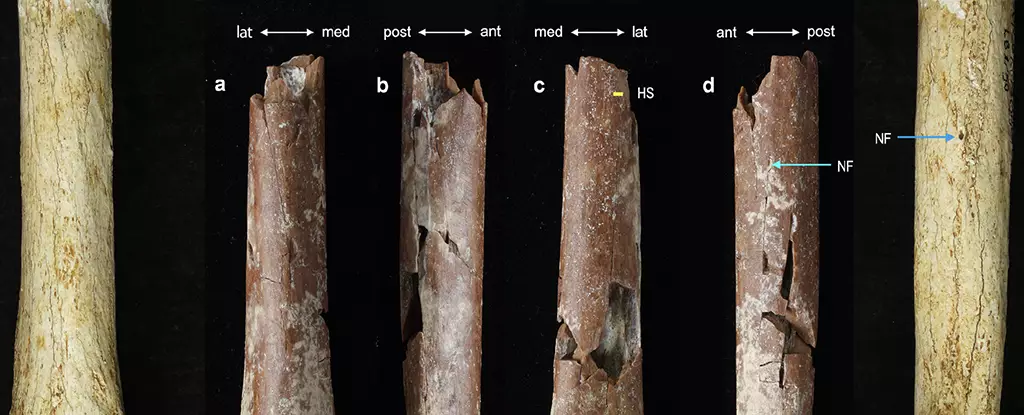Recently, a 700,000-year-old fragment of an adult humerus was uncovered on the Indonesian island of Flores. This ancient bone has been identified as belonging to a member of the species Homo floresiensis, also known as ‘hobbits’. What sets this discovery apart is not just the age of the bone, but its size. In fact, this upper arm bone is the smallest ever recorded in the hominin fossil record, painting a picture of a smaller and more unique ancestor than previously imagined.
Typically, tiny bones are associated with children, but researchers were able to determine that this humerus belonged to an adult by analyzing microscopic structures within the bone. These structures, called osteons, change in number, size, and arrangement as a bone matures, providing insight into the individual’s age at death. Surprisingly, the humerus resembled that of an adult Homo sapien, suggesting that the individual was fully grown. Estimates based on the bone’s length indicate that this ancient human stood at just 1 meter tall, making them even smaller than the already diminutive Homo floresiensis.
The discovery of this tiny ancestor challenges previous hypotheses about the origins of Homo floresiensis. It is now believed that these ancient humans descended from a population of Homo erectus from Java, rather than from a more ancestral African species. This suggests that a group of early Asian hominins, possibly Homo erectus, became isolated on Flores around one million years ago and gradually evolved into the small-statured Homo floresiensis we know today.
In addition to the humerus, two remarkably small teeth were unearthed at the Mata Menge site. These teeth, one from an adult and one from a child, provide further evidence of the tiny stature of Homo floresiensis. Their shape indicates a potential link to Homo erectus populations from Java, reinforcing the theory of their evolutionary path. Despite the small size of these ancient humans, there is no direct genetic link to modern inhabitants of the region, suggesting a complex and intriguing evolutionary history.
The phenomenon of island dwarfism, where animals evolve to be smaller in isolated environments, may have played a role in the evolution of Homo floresiensis. The unique environment of Flores, with its limited resources and isolation, may have favored smaller-statured individuals. This evolutionary advantage could explain why tiny traits evolved multiple times in different species on the island, including the enigmatic ‘hobbits’.
The discovery of the tiny arm bone from Flores sheds new light on the evolutionary history of Homo floresiensis. By unraveling the secrets of this ancient ancestor, researchers have pieced together a complex story of isolation, adaptation, and survival. As we continue to unearth more fossils and analyze genetic data, the mysteries of the ‘hobbits’ of Flores will slowly be unraveled, providing insights into our own origins and the incredible diversity of the human family tree.


Leave a Reply